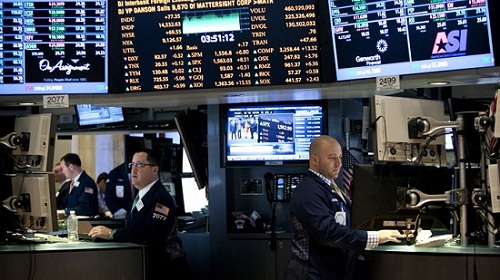Here are the top 5 things to know this morning:
1. Dutch election in focus

As the Federal Reserve meets in the coming week, there are other issues that will get the attention of markets.
The Dutch election on Wednesday is being watched as a test for the spread of populism in Europe, particularly ahead of next month's French election.
Opinion polls have suggested that Dutch nationalist Geert Wilders' right-wing Freedom Party, which wants to take the Netherlands out of the European Union and stop Muslim immigration, has lost its lead to more mainstream opponents.
However, a diplomatic standoff with Turkey over the weekend threatened to overshadow the final stretch of campaigning and influence voting in Wilders' favor with less than 48 hours to polling day, prompting investors to remain weary over the possibility of a Brexit or Trump-style shock result.
2. Sterling higher as U.K. prepares for Brexit

The British pound pushed higher against the dollar and the euro on Monday, as markets braced for Prime Minister Theresa May to trigger Article 50, which kicks off the process of exiting the European Union.
Britain's Article 50 Brexit bill returns to the House of Commons on Monday for lawmakers to debate and vote on conditions attached to it by members of the House of Lords.
If the Brexit bill is passed Monday, it could allow Theresa May to announce the triggering of Article 50 as early as Tuesday, when she is due to brief parliament on last week's EU summit.
3. Oil struggles near 3-month lows

Oil prices struggled near the lowest level since the end of November on Monday, as concern over rising shale production and record-high U.S. crude inventories offset optimism that OPEC and its allies have been following through on their commitment to cut production.
U.S. WTI crude fell to a session low of $47.92 a barrel, while Brent sank to $50.91 a barrel. Both are levels not seen since November 30.
Data from oilfield services provider Baker Hughes on Friday revealed that the number of active U.S. rigs drilling for oil rose by 8 last week, the eighth weekly increase in a row.
That brought the total count to 617, the most since October 2015, underlining worries that the ongoing rebound in U.S. shale production could derail efforts by other major producers to rebalance global oil supply and demand.
4. Dollar dropped to 2-week lows

The U.S. dollar index, which measures the greenback’s strength against a trade-weighted basket of six major currencies, was down about 0.2% at 101.17 in New York morning trade.
It fell to a two-week low of 100.86 earlier after the latest U.S. employment report showed that jobs growth beat expectations, but wage growth remained tepid.
The benchmark U.S. 10-Year yield was slightly lower at 2.564%, well below Friday's peak of 2.624%, which was its highest since December.
Losses were limited amid heightened expectations that the Federal Reserve will hike interest rates at the outcome of its two-day policy meeting on Wednesday.
5. Global stocks mostly lower

U.S. stock market futures pointed to a lower open on Monday morning, as investors turned their attention to elections in Europe, while preparing for a potential rate hike by the Federal Reserve this week.
In Europe, stocks hunted for direction in mid-morning trade, as an event-packed week for global markets got underway.
Earlier, in Asia, markets ended mostly higher, with the Shanghai Composite in China closing up around 0.8%, while Japan's Nikkei tacked on about 0.2%.




